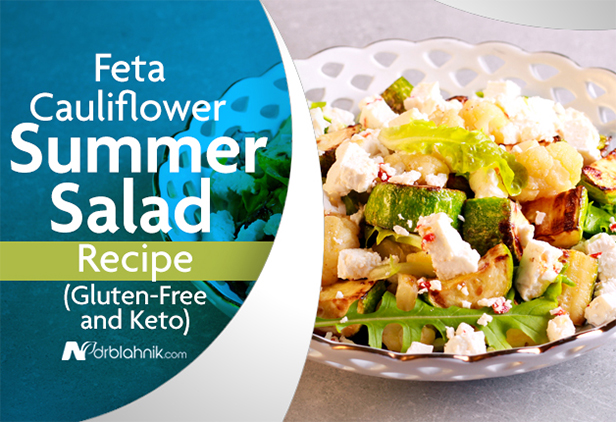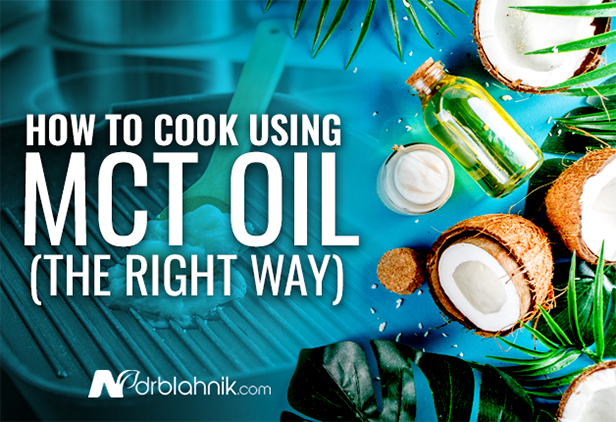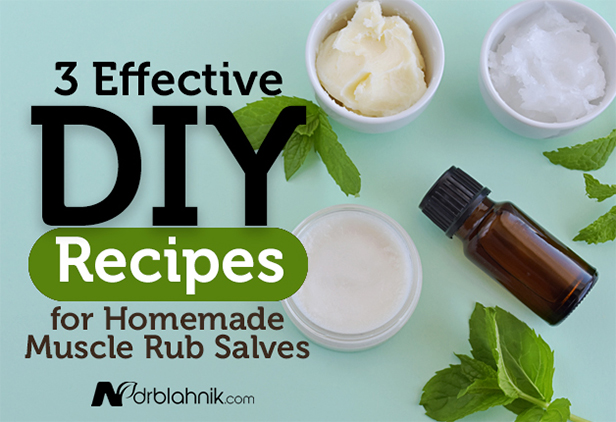If you live a healthier lifestyle than most Americans, especially if you have an allergy to gluten or simply follow the keto lifestyle, you might be hard-pressed when it comes to finding tasty recipes for meals. One of the more common and nutritious options for that goal is salads.
A salad might seem like a bland option when compared to the various forms of food available in the world today, even for those with prohibitive diets like gluten-free or keto. However, there are certainly ways to make salads that are nutritional and accommodating to those lifestyles while still being flavorful. With this article, we hope to enlighten you with a recipe to make your salad more enjoyable while also helping you better understand why some salads are not quite as good for you.
Table of Contents
Not All Salads
There is a misconception that all salads are healthy just on the principle of their existence, but what many do not know is that just because it is a salad does not make it healthy. Many popular salads use ingredients that are unhealthy and contain gluten or are directly opposed to the keto lifestyle. One of the common overlaps between gluten-free and keto diets is the restrictions on consuming bread and other carbs. This dietary restriction prevents those subscribed to gluten-free and keto lifestyles from enjoying an extremely common salad topping: croutons.
Croutons are pieces of re-baked bread that are often sprinkled on top of salads to add texture and flavor. Since croutons are made from bread, the keto diet strictly forbids their consumption as bread counters the very basics of the keto lifestyle. As for gluten-free… well, it goes without saying that croutons have gluten in them since they are made from wheat-based bread.

A misconception that occasionally crops up is that vinaigrette dressings are not gluten-free. Indeed, vinegar often comes from wheat, but the distillation process removes large molecules, including gluten. If your vinaigrette is made from distilled vinegar, it’s fine. However, if you like using a dressing made with malt vinegar, be aware that it won’t be gluten-free.
Even without being in direct opposition to gluten-free or keto diets, many salads use ingredients that are largely unhealthy and therefore not ideal for those looking to live by healthier standards. Many popular salads make use of toppings like sour cream and mayo-based creams that add a great deal of fat and dairy to an otherwise healthy meal. On top of this, many of the most popular salad dressings, like ranch, suffer the same issues that drown the nutritional and healthy aspects of salads in unhealthy fats and sugars that counter the benefits of the salad itself. Summer salads are notoriously guilty of contradictorily incorporating unhealthy ingredients like these into their recipes.
MCT Oil
While salads are exceptionally healthy choices, they often lack fats that are vital for the body. Medium-chain triglyceride (MCT) oil can be used as a supplement to rapidly energize your body. MCT molecules within the oil are smaller than the more common long-chain triglycerides (LCT) found in proteins that vegans and vegetarians cannot consume or gluten allergies prevent. This makes MCT easier to digest while providing energy at a faster rate than you would get otherwise. MCT oil usually sees use for people looking to improve weight loss, control their appetite, or compensate for issues taking in nutrients and fats. Still, it can be used as a substitute in a diet in which those vital fats are not readily available.

MCT oil is particularly beneficial for those following a ketogenic diet that sacrifices carbs for higher fat contents. Using the MCT oil can help you burn off the harmful fats generated through your diet and keep you burning them. While MCT is useful in weight regulation, adding it to your summer salad will help bolster the energy you get from eating the salad through the ketones it produces. The ketones break down the fats when carbohydrate intake is particularly low, allowing the MCT oil to take over when your keto diet or gluten allergy keeps you from consuming viable sources of carbohydrates.
Enough of the nutritional analysis. You’re not here for a breakdown; you’re here for recipes. Here are two of our favorites.
Recipe #1: Feta Cauliflower Salad
The first recipe we will be covering uses flowers and cheese in addition to one of our supplements to maximize the nutritional and health values of the ingredients. While this salad is both gluten-free and keto-friendly, it is not for vegans due to the reliance on cheese for adding flavor and healthy dairy fats to the salad. The first thing we will need is our ingredients:
- 1x head of cauliflower chopped bite-size
- 1x zucchini chopped bite-size
- ½x sweet onion, chopped
- 1x jar roasted red peppers, chopped
- 6-8x ounces feta cheese, crumbled
- 2x garlic cloves, chopped
- Handful fresh basil leaves, chopped
- 2-3x tablespoons fresh lemon juice
- ¼x cup extra-virgin olive/avocado oil
- Bragg’s Liquid Aminos to taste
- Pink salt and pepper to taste
- Dropper of Simply REAL MCT oil
Now that we have our ingredients, all that is left is to put them together into the salad proper. The instructions to make your feta cauliflower salad are:
- Mix the garlic, lemon juice, oil, Bragg’s Liquid Aminos, salt, and pepper in a small bowl.
- Pour the dressing over the vegetables and feta cheese.
- Add the basil leaves and then gently toss the salad to mix dressing in with the rest of the salad.
- Serve immediately or refrigerate for later consumption.

If you are looking for ways to spruce up the salad a bit, there are ways to prepare the ingredients to boost the overall flavor of the salad. You can roast or broil the cauliflower, onion, and zucchini and then drizzle them with olive oil, salt, and pepper. After you have seasoned your cooked vegetables to your liking, add the red peppers, dressing, basil, and feta to complete the salad, which, if done correctly, should result in an even tastier salad than you would otherwise get with this recipe.
While the salad has its benefits, you also should factor in the cost of the ingredients. In the interest of keeping in line with healthy ingredients, we will be using the prices from Whole Foods as our frame of reference to ensure quality ingredients are factored in:
- 1x head of organic cauliflower will cost you $3.99 per head.
- 1x organic zucchini will cost you $2.79 per pound.
- 1x organic sweet onion will cost you $1.99 per pound.
- 1x 16 oz. jar of organic roasted red peppers will cost you $4.99 per jar.
- 1x 6 oz. container of crumbled feta cheese will cost you $3.99 per container.
- 2x cloves of organic garlic will cost you $3.99 per pound.
- 1x container of organic basil will cost you $2.99 per container.
- 1x 16 fl. oz. bottle of organic lemon juice will cost you $4.99 per bottle.
- 1x 17 fl. oz. bottle of extra-virgin olive oil will cost you $11.49 per bottle.
- 1x 32 fl. oz. bottle of Bragg’s Liquid Aminos will cost you $8.39 per bottle.
- 1x 10 oz. jar of pink salt will cost you $8.79 per jar.
- 1x 2.31 oz. jar of pepper will cost you $5.99 per jar.
This means making this salad will be somewhat costly for the best possible ingredients and supplements. However, the nutritional and health benefits associated with the cost are well worth the price.
Recipe #2: Israeli Salad
If you are a vegan, the recipe we have listed above is not for you since it features feta cheese as a primary ingredient. Since we believe in accommodating all dietary lifestyles, we have gone ahead and picked out a vegan alternative that still retains the guidelines for maintaining a gluten-free and keto summer salad. Our solution is the Israeli salad, a staple of Israeli cuisine that results in a tasty, and relatively easy to serve, salad. Like with our feta cauliflower salad, we will start by listing our ingredients:
- 2x cups ripe tomatoes, thinly diced
- 2x cups cucumbers, thinly diced
- ½x cup red onion, thinly minced
- 2x tablespoons flat-leaf parsley, thinly minced
- 2x tablespoons extra-virgin olive oil
- 2x tablespoons lemon juice
- ½x teaspoons sea salt
- Dropper of Simply REAL MCT oil
Once we have gathered our ingredients, the next step lies in the preparation of the salad itself. The instructions for making your Israeli salad are as follows:
- Chop the tomatoes and cucumbers thinly and to a similar size to each other to maintain flavor consistency.
- Place the tomatoes, cucumbers, onions, and parsley in a medium-sized bowl.
- Drizzle the mix with olive oil and lemon juice, and then sprinkle with salt.
- Toss the salad to mix the ingredients and add salt to taste as needed.
- Serve immediately due to a large amount of liquid produced.

This salad is light yet still remarkably filling and is best served alongside an equally light side to bring additional flavor to the meal. However, serving it on its own is just as feasible. In terms of ingredients, the costs are as follows:
- 2x organic tomatoes will cost you $2.99 per pound.
- 1x organic cucumber will cost you $1.49 per unit.
- 1x organic red onion will cost you $1.69 per pound.
- 1x bunch of organic parsley will cost you $1.49 per bunch.
- 1x 17 fl. oz. bottle of extra-virgin olive oil will cost you $11.49 per bottle.
- 1x 16 fl. oz. bottle of organic lemon juice will cost you $4.99 per bottle.
- 1x 21 oz. can of iodized sea salt will cost you $1.99 per can.
Since Israeli salad requires fewer ingredients than the feta cauliflower salad, it won’t cost nearly as much. However, the Israeli salad is not as substantial or nutritional as the feta cauliflower salad since the former also use dairy-based fats to bolster the nutrition.
The Point
Summer salads are something of a staple for lifestyles that rely heavily on vegetables for meal preparation. Making one that is both nutritional and filling can be a real challenge, especially if you are allergic to gluten or subscribe to the keto lifestyle, which imposes restrictions on the food you can consume regularly.

Keto restricts a great many foods that are taken for granted by those who do not subscribe to the lifestyle. Foods such as bread, pasta, potatoes, and candy are all immediately eliminated from your diet. However, these seldom have an impact on salad preparation beyond the croutons made from re-baked bread. Meanwhile, gluten allergies restrict much more by removing malt-based dressings, granola, and other accouterments to your salad. Fortunately, MCT oil can be used to replace a great deal of gluten-based products for their healthy fats. In addition, the MCT oil helps stand-in for the intake of carbohydrates necessary to break down fats and can help provide energy that the salad might be unable to provide on its own. Be sure to check out our brand of Simply Real MCT Oil if this sounds interesting to you!
The salads themselves are easy enough to prepare but can suffer from high costs if you intend to exclusively use organic products from health-based stores like Whole Foods. That is not to say that ingredients from more affordable grocery stores and non-organic cannot be used instead. While the price tags on the top ingredients can be intimidating, the health benefits they provide cannot be overstated.
Ultimately, your summer salad should be tailored to your diet and habits to best serve your needs and nutrition. The beauty of salads is that they can be modified to suit your tastes with additional vegetables to help add flavor and texture without sacrificing nutrition or health value.
What were your thoughts on the recipes? After reading through the article, are you inspired to try one out yourself? Which one sounds the most appealing to you and why? What about recipes you may know of? Is there anything that you prefer for your salads? Be sure to leave us all your thoughts and stories down in the comments section below! Telling us your thoughts and stories not only helps us but also helps those who come after you who may have similar stories or questions that they may be thinking about!






